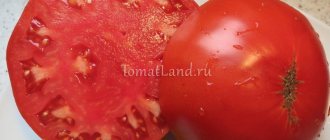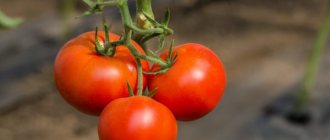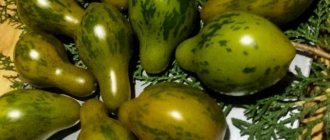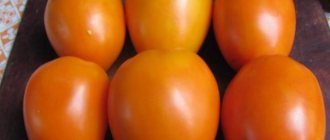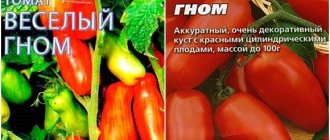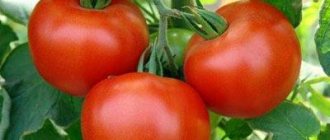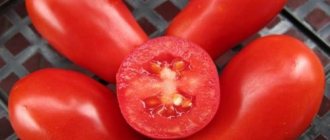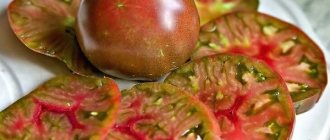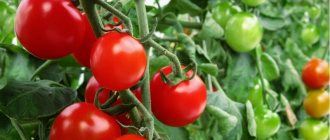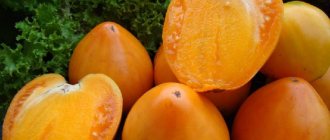The Big Bear is a productive variety, which is distinguished by the unlimited growth force of the bush. With proper care, the plant can reach two meters in height and develop fruits weighing up to 500 g. It is best to raise the bush in two stems. Despite good growth performance, outdoor results are better than in greenhouses.
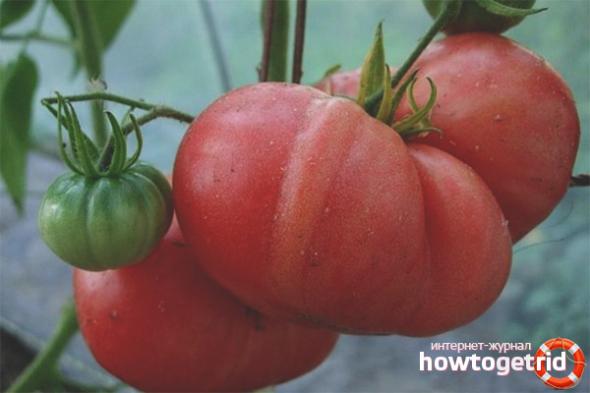
Description of the variety
The tomato variety Fidelio was obtained by well-known breeders from Novosibirsk Dederko V.N. and Postnikova O.V., from whose hands came out many of the most delicious and fruitful varieties of tomatoes, most of which are successfully grown far beyond the Siberian region.
In 2007, the Fidelio variety was admitted to registration in the State Register of Breeding Achievements of Russia. It can be grown with equal success both in open ground and under various covering structures - from greenhouses to greenhouses in various regions. Judging by the reviews of those who planted this variety, the geography of Fidelio's tomato cultivation has already crossed the borders of Russia - it is successfully grown and bears fruit both in neighboring countries, in Ukraine and Belarus, and in the far abroad, in Germany.
According to the manufacturer, such an interesting name was given to this variety of tomatoes for a reason. Initially, the variety was brought from the island of Cuba and passed a long-term selection of the most resistant plants in Siberia. After such adaptation to very harsh weather conditions, a new variety was bred, which was named after the leader of the Cuban Republic. But its southern roots still make itself felt, the Fidelio tomato is also distinguished by its excellent fruit set at the hottest temperatures. Therefore, it will be a good choice for growing in hot regions. Yes, and in greenhouses, where in summer the temperature can sometimes go over + 30 ° C and there are big problems with fruit set in most tomato varieties, Fidelio is able to show himself from the best side.


Comment! Fidelio tomato seeds are produced mainly agro.
Tomato Fidelio belongs to the real indeterminate varieties, according to some reviews, in greenhouses it can grow up to two meters or more in height. But according to the description of the Fidelio variety, given by the manufacturer, it is more likely to be of average height, reaching a height of only 100-150 cm. In any case, to get good yields, especially in Siberian conditions of a short summer, he needs pinching, tying the stems and shaping. It makes sense to form for this variety in two stems. The leaves are large, in a traditional tomato shape. The bush differs in a somewhat "weeping" shape, because under the weight of the tomatoes, the branches lean down and may even break off with a poor-quality garter.
Fidelio tomatoes begin to ripen 110-115 days after germination, so this tomato is a mid-ripening tomato.
In terms of yield, Fidelio's tomato may well take its rightful place among many large-fruited tomatoes. In favorable greenhouse conditions, this variety can produce up to 6 kg of tomatoes per bush per season. But even without special care, it is quite possible to get 3-3.5 kg of fruits from each tomato plant.
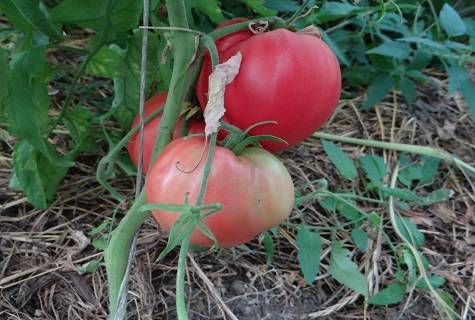

Thanks to the Siberian hardening, Fidelio's tomato tolerates a variety of adverse weather conditions well. His resistance to diseases is also above average. Although the manufacturer does not have official data on this, judging by the reviews, the Fidelio tomato is able to successfully resist the main set of diseases characteristic of the nightshade family.
How to grow tomato seedlings "Big Dipper"
Step 1. Preparation of seeds and soil
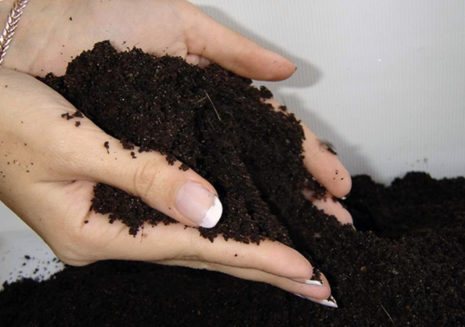

You can grow seedlings in a purchased substrate or a mixture of garden soil with humus. The second option is preferable, because the seedlings should immediately get used to the land in which they will grow in the future. Sift the soil for seedlings, remove pebbles from it. It is advisable to steam the soil in advance or in the oven. On the day when the seeds are planted, we moisten the soil well.
We do not prepare purchased seeds for planting.
Important! Do not plant as many seeds as you can fit in your garden beds or greenhouse. It is better to make a reserve in case some of the plants die during sudden severe frosts or in other emergency situations. Make one or two "reserve snails" that will remain at home on the window during the period when the bulk of the roots will be planted in the ground.
Step 2. Preparation of tools and materials necessary for growing seedlings
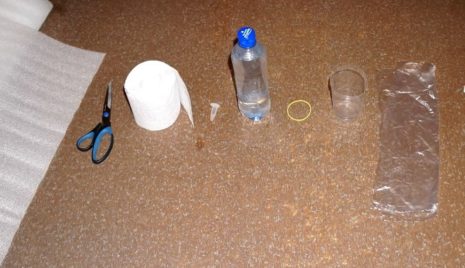

- Stationery elastic bands. Sold in sets. Or office / painting tape.
- Medical shoe covers or food film in rolls.
- Multilayer toilet paper.
- Sharp knife.
- Cutting board.
- Tweezers.
- Water-indelible marker to sign "snail".
- Substrate under floor coverings "Plenex". The thickness of the substrate is strictly 2 mm. The substrate should not be foil-coated.
We fasten the roll of the backing with tape in two or three places so that it does not get tousled. The roll must be cut into strips, the width of which is equal to or slightly less than the width of the toilet paper roll. We put a mark on the substrate and cut with a large sharp kitchen knife (not scissors). In the future, small irregularities in the edges can be trimmed.
Step 3. Planting seeds "in a snail"


Align the edge of the cut backing with the edge of the toilet paper roll. Place on a cutting board and roll out about 30 cm.
Important! At this stage, we do not cut the substrate to length. We will do this when we have planted all the seeds. In one "snail" you can grow several varieties of tomatoes at once, if you separate them with a "limiter" in the form of a plastic disposable knife with the signature of the variety. But it is better not to grow too many varieties in one roll to avoid confusion. Optimally 1-2 varieties in one "snail".
How to calculate the length of the snail in advance? It's simple. The seeds on the substrate will be placed at intervals of, for example, 10 cm and 5 cm from the edges. That is, to calculate the length, simply multiply the interval between seeds by the number of seeds and add 10 cm.
We moisten toilet paper abundantly from a spray bottle (or a syringe) with a solution of the Epin preparation at the rate of 3 drops per 0.5 l of warm water. We spread the seeds of the Big Dipper tomatoes with tweezers with an interval of at least 2 cm and no more than 10 cm and an indent from the edge of the substrate 0.5-1 cm. We twist the “snail”.
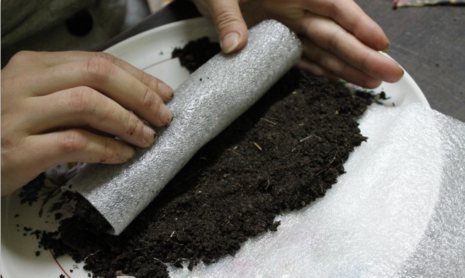

Cut off the excess backing and fix the roll with a piece of tape. We put the snail in a regular plastic bag, tie it on top, put all the snails in a box and put it in a warm place.
After 3 days we check the condition of the seeds. We remove the rolls from the packages and unfold. The seeds should "hatch".
We fill the sprouted seeds with soil with a layer of 1-2 cm and roll up the "snail" again. We fix the roll. We put it vertically and sprinkle it with plenty of soil.
We spray the "snail" from a spray bottle with a solution of the drug "Fitosporin-M" and cover it with a garbage bag or cling film, which we remove after the sprouts appear.
We put the snails with the planted seeds in a box or any other suitable container and cover with foil until shoots appear.
Before the appearance of green shoots, you need to ventilate the "snails" by removing the film for 15-20 minutes daily.
Step 4. Seedling care
Care consists in periodically watering the "snails" with a syringe. Do not overmoisten the earth or dry it out.
Step 5. Picking tomatoes into diapers
It is necessary to dive seedlings. If this is not done, then the sprouts will begin to stretch.
We take our "snail", remove the fixing elastic bands from it, put the bundle horizontally on a table covered with newspapers or film. We bend the edge of the "snail".
Important! It is not necessary to deploy the whole "snail" at once. Perhaps you physically cannot or do not want to dive the entire volume of tomatoes at once, want to take a break from work, etc.
We take a "diaper", that is, an ordinary transparent cellophane food bag (packing) measuring 22x32 cm. We put it on the table or, if it is more convenient, for distribution.
Important! Do not use paper or newspapers as a "diaper". They quickly get wet and lose their shape.
Pour one tablespoon of soil onto the "diaper" (in the middle). We extract the first sprout from the "snail" and, together with a lump of earth, transfer it to the "diaper". Pour another tablespoon (or slightly less) of soil on top of the root, lightly crush the soil with your hand. The soil should cover the stem to the very cotyledonous leaves.
If the soil is too dry and crumbles, then we spray it abundantly with water from a spray bottle, and only after that we put the sprout on the “diaper”. If the roots of the tomato are too long, their lower ends can be bent slightly. You cannot pinch or pluck the roots of tomatoes.
Important! In the process of diving, we discard weak shoots that are lagging behind in growth.
On a note! Tomatoes are a crop that tolerates diving and transplanting well.
We begin to "swaddle" the sprout:
- we wrap the left free end of the bag, closing the lump of earth;
- bend the bottom edge of the bag (you can first tuck the bottom edge, then the free ends of the bag to the right and left of the clod of earth);
- wrap the remaining end of the bag around, forming a neat bundle;
- we fix the "diaper" with an elastic band and put it vertically in a regular fruit box or other similar container with a low side. At the bottom of the box, we put a two-centimeter layer of wet sawdust in advance;
- we place the bundles in the container tightly next to each other.
On a note! If the seedlings are large, then the bottom edge of the "diaper" is not tucked. Simply put in two handfuls of soil, put in the sprout, add another handful of soil, and then wrap the bag in a tight roll. In this case, the bottom will be open.
When all the seedlings are sorted out, the box must be removed to a warm, bright place.
In the "diaper" you can add soil as the seedlings grow. To do this, unfold the package, add some soil, and then fold the "diaper" back and put it in the box.
On a note! There is no need to hurry with the pick. It is better to hold it a little later, when the sprouts have three leaves.
For hardening, seedlings can be taken out in a polycarbonate greenhouse or loggia for several minutes, gradually increasing the time to several hours. If the air temperature is below + 15 ° C, it is better to cover the sprouts with any covering material.
Characteristics of tomatoes
The beautiful fruits of the Fidelio tomato can impress any tomato lover. What are the characteristics inherent in the fruits of this variety?
Attention! The shape of the Fidelio tomato variety causes the most controversy among those who grew it, regardless of the place of growth, in open or closed ground.
- Manufacturers describe the shape of this variety as heart-shaped and ribbed. But most gardeners agree that the lower brushes have a strongly ribbed, but rather flat-round shape. But on the upper branches of this tomato, the fruits really take on a pronounced heart-shaped shape and often even without ribbing.


- By the way, the tomatoes on the lower brushes are large in size, their weight can reach 800-900 grams. On average, the mass of one tomato is 300-400 grams.
- The color of tomatoes is very beautiful, shades can vary from light pink to dark pink and almost crimson with a slight pearlescent sheen.
- The fruits have a dense, fleshy, sugary pulp at the break with a high dry matter content. According to some reviews, the pulp of Fidelio tomatoes is even too dry.
- There are many seed chambers in tomatoes - more than six, but there are very few seeds, especially in the lower, largest fruits.
- The taste is very good, there is a lot of sugar and little acid in tomatoes.
- By appointment, Fidelio tomatoes are most suitable for fresh consumption, in salads or for making juices, tomato paste, adjika and lecho. They are not suitable for whole-fruit canning due to their large size.
- Tomatoes are stored quite well. They can only be transported over short distances.
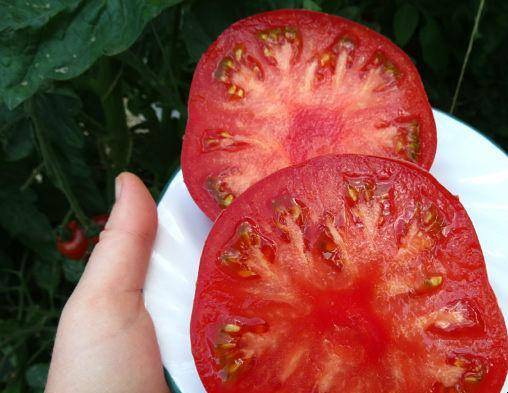

Summer care
Judging by the descriptions of the Fidelio tomato variety available on the Web in specialized forums, it does not cause special problems to summer residents when growing on plots. Taking care of these tomatoes, judging by the reviews, is quite easy. On the beds, Fidelio bushes are planted in such a way that there are no more than 3 pieces of them per 1 m2. This will provide in the future a sufficient amount of nutrients and light to each plant. Since Fidelio's tomatoes grow quite large, they, of course, require a garter. A trellis is usually placed next to such tomatoes. Also, stakes can be used as a support for such tomatoes.
Advantages and disadvantages
Fidelio's tomato has many advantages that allow it to enjoy the special love of summer residents and gardeners:
- It has large fruits.
- Differs in good taste.
- Shows good resistance to unsuitable weather conditions and to various sores inherent in tomatoes.
- It is characterized by excellent fruit set even in the hottest weather.
- Differs in high productivity
Among the shortcomings, the need for regular pinching, shaping and garter is usually noted. However, this must be done for all indeterminate, large-fruited varieties.
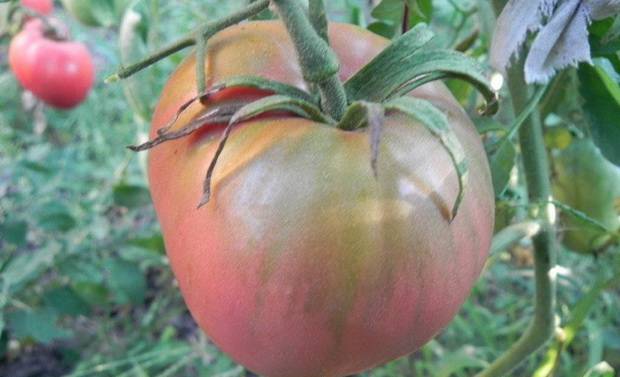

Growing features
The Fidelio tomato is grown through seedlings. The indoor planting period lasts about two months. A tall tomato is planted in a permanent place with 7-8 leaves on the stem. Depending on the region of cultivation in open ground, the transplant is carried out in May-June.
For sowing, they take shallow containers and special soil for growing tomatoes. It should be light, nutritious, breathable and permeable. The tanks must have drainage holes. When using the same container for planting several times, it is washed or disinfected to eliminate possible residues of fungal spores. For the same purpose, the soil is treated. A few days before planting, it is spilled with a fungicide solution.
Advice! Before sowing, seeds are disinfected, including those collected from the fruits themselves.
For treatment against diseases, planting material is soaked in hydrogen peroxide or potassium permanganate solution. And to accelerate germination and general health of plants, the seeds are also kept in a growth stimulator, for example, "Energene".
The soil is pre-mixed until homogeneous, large inclusions are removed. Then leveled and tamped slightly.Before sowing, the soil is well moistened, but so that when the earth lump is compressed, water does not drip from it. Seeds are laid out at the same distance and covered with a thin layer of soil, peat or soaked coconut substrate. The top layer is also lightly pressed.
During the period when several true leaves appear, the plants are picked into a more spacious planting container. A week before planting, the seedlings are hardened. Plants are transferred to open ground during a period when the threat of recurrent frosts passes, positive air temperatures are established, and the soil warms up well.
For better air exchange and sufficient plant nutrition, it is recommended to plant them no more than three per 1 sq. m. A strong support is installed to tie the stems. In the open ground, they also provide for the possibility of sheltering plants in case of bad weather.
Advice! Water the tomatoes with heated water, preferably from natural sources.
Thanks to even watering, tomatoes are less prone to cracking. During the growing period, up to four dressings are carried out using mineral and organic fertilizers. To maintain the microclimate of the soil, a mulching layer is applied to it.
Reviews of gardeners


Gardeners often leave the most positive reviews about the Fidelio tomato, since its fruits belong to the most beloved group of large-fruited pink-raspberry tomatoes.
Oksana, 42 years old, Ulyanovsk region
For a long time I was looking for a variety of large tomatoes that would be both sweet and fruitful, and would survive in my garden. The seeds of the Fidelio variety from the Siberian Garden accidentally caught my eye. Siberian hardened tomatoes should be unpretentious, but just in case, I planted the grown seedlings on high warm ridges, filled with a large amount of organic material since autumn. And this summer they made me very happy. True, they demanded high supports, and I had to tie them up all the time, but from each bush I collected about two eight-liter buckets of tomatoes. And the tomatoes were so sweet that it was somehow hard to believe that such a miracle could grow in the open field.
Galina, 46 years old, Chelyabinsk
I bought and sowed Fidelio seeds three years ago. Already at the seedling stage, it became clear that the plant would be very powerful. Of all the grades, they were the highest. After landing in the greenhouse, I rushed to grow in height so quickly that I was afraid that it would break the roof in the greenhouse. And at the same time, the first flower cluster was formed only after 11 leaves. Development at the beginning went very slowly, and I already thought that this variety could be safely attributed to the late ripening, when suddenly it began to grow rapidly and even overtook some of its neighbors. The taste of summer tomatoes during the heat was somehow too sweet, some fruits were even dryish inside. But by the fall, everything returned to normal with both taste and juiciness of tomatoes. In general, a very worthy variety, I collected seeds from the largest fruits and now I grow it every year.
Ekaterina, 37 years old, Nizhny Novgorod
Every year I plant many different varieties of tomatoes and constantly compare them with each other. I got the feeling that almost all large-fruited heart-shaped tomatoes originated from the Bovine Heart. It's just that breeders in different regions improve the characteristics of this variety and give them their own names. At least, the tomatoes Rosy honey, Mazarin and Fidelio practically did not differ from each other. But in comparison with the Oxheart, they all have much higher yields, tomatoes are larger in size (up to 600-800 grams) and the taste of the fruit is richer and sweeter. And the tomato plants themselves will be more resistant to various diseases.
Alexander, 43 years old, Barnaul
Fidelio liked the tomato for its beautiful heart-shaped fruits, and the taste was also excellent - excellent honey tomatoes.Their skin is dark pink, and the flesh is just raspberry, without any whitish streaks, as happens with some tomatoes. On my site, it showed itself as a medium-early, all August harvesting from 10 bushes. The bushes themselves were of medium height, but it was necessary to tie them up, and not only the stems, but also some fruits. In the first year of cultivation, I led it in two trunks, so the second stem could not withstand the load of the crop and broke off. Since then, I have been tying it up more carefully. The mass of the first tomatoes usually reaches 600-700 grams, later the fruits weigh on average about 350 grams.
Stealing
In order to get a high yield of Fidelio, experienced summer residents recommend forming these tomatoes into 1-2 stems. These tomatoes should be grafted regularly. Tomatoes of this variety are watered in the summer, usually twice a week. In this case, the beds are moistened abundantly. Too often, experienced summer residents do not recommend watering these tomatoes. Otherwise, the fruits on Fidelio tomatoes may crack. Fertilizing these tomatoes, according to summer residents, is best with organic matter.
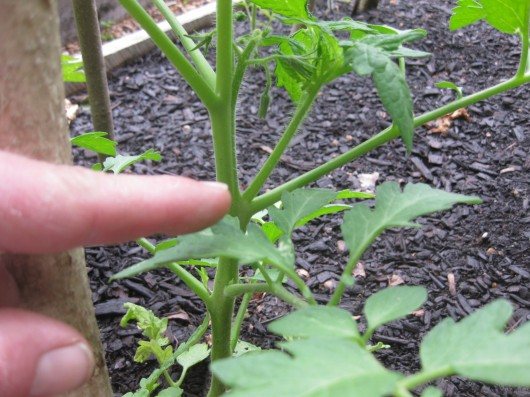

The variety Fidelio is considered resistant to various diseases of the nightshade. If the preparation of tomato seeds for sowing for seedlings was carried out correctly, they most likely will not pick up any infection. However, a couple of times a season these tomatoes for prevention should still be sprayed with some kind of fungicide or, for example, an infusion of garlic.

